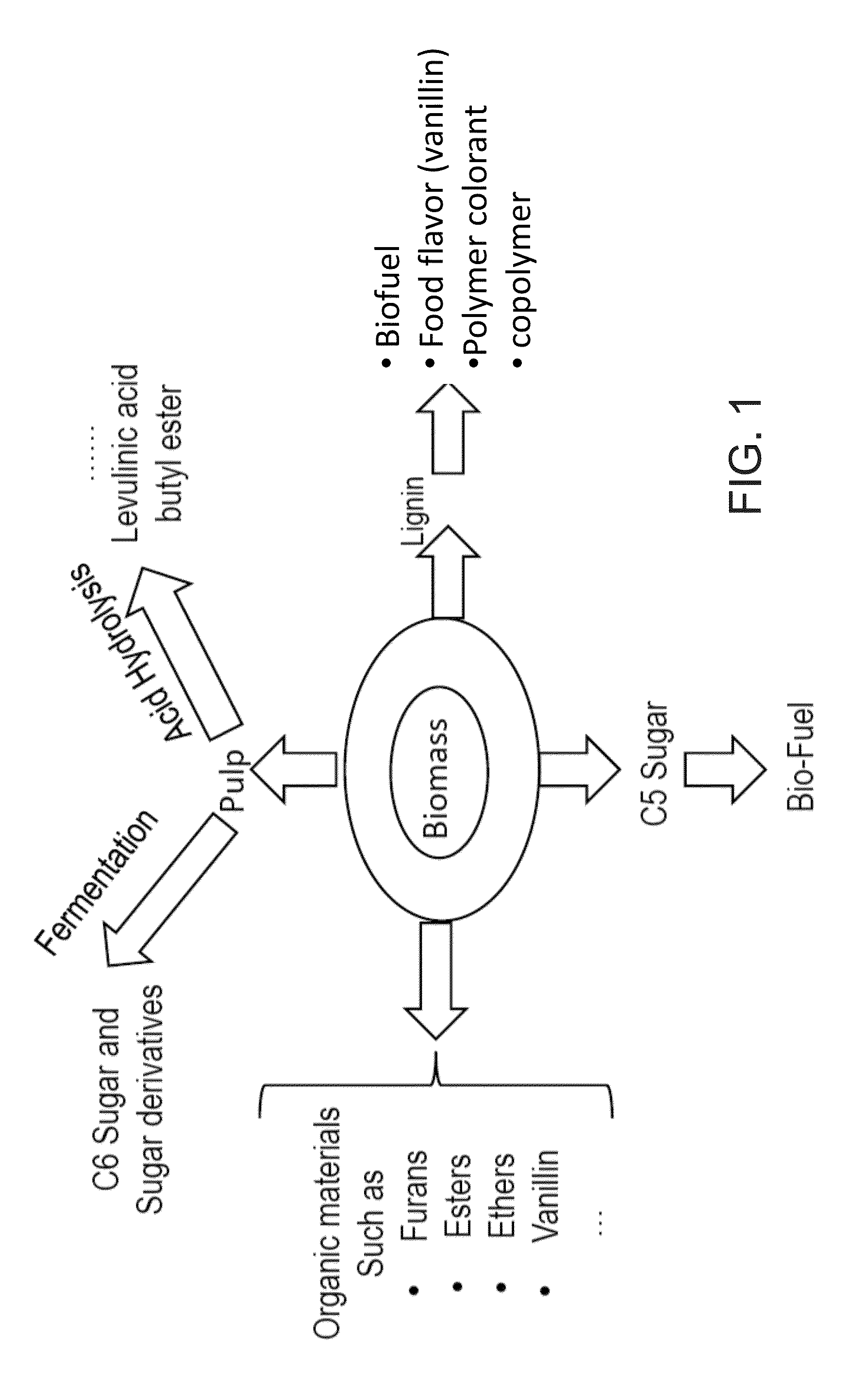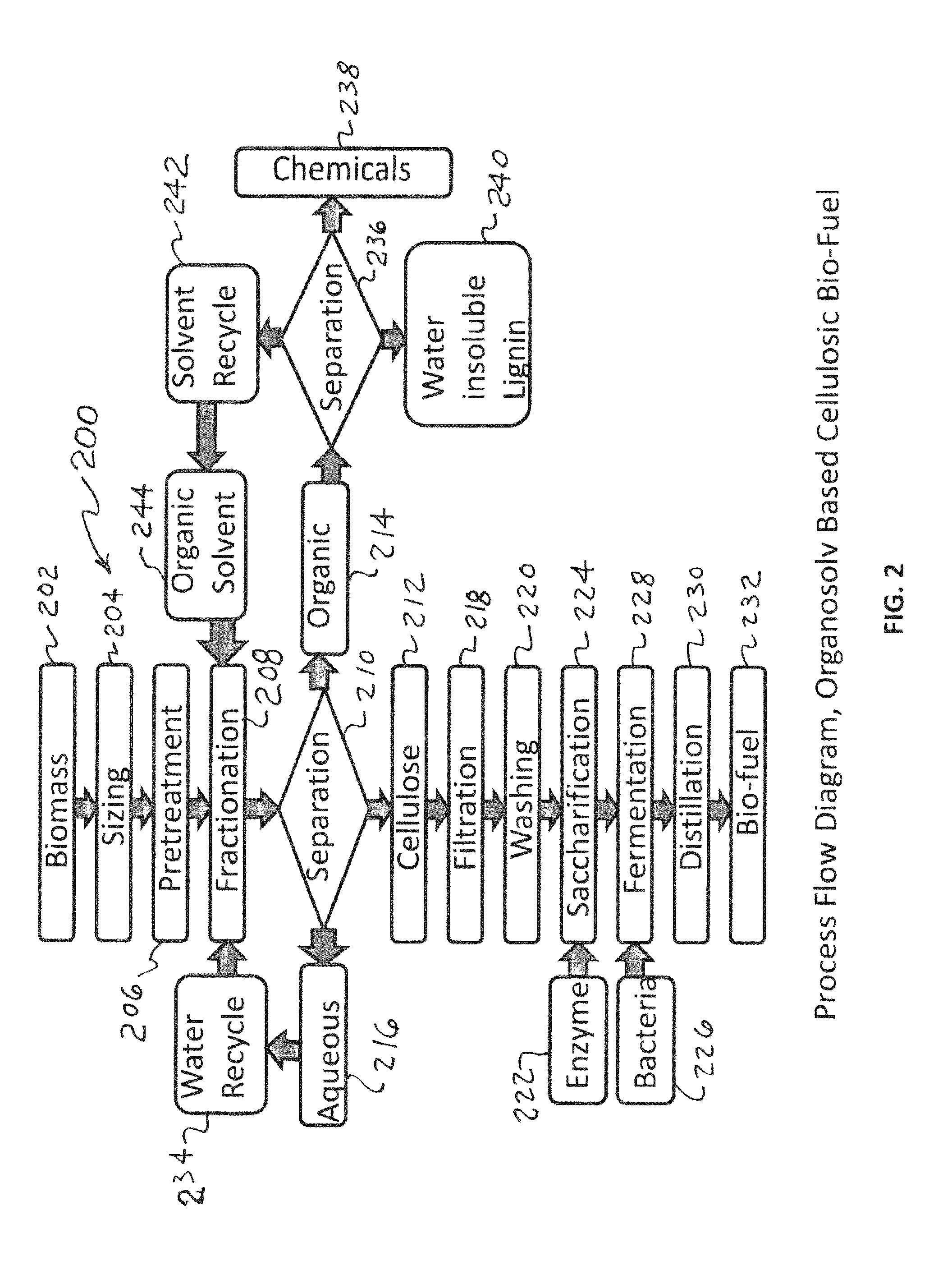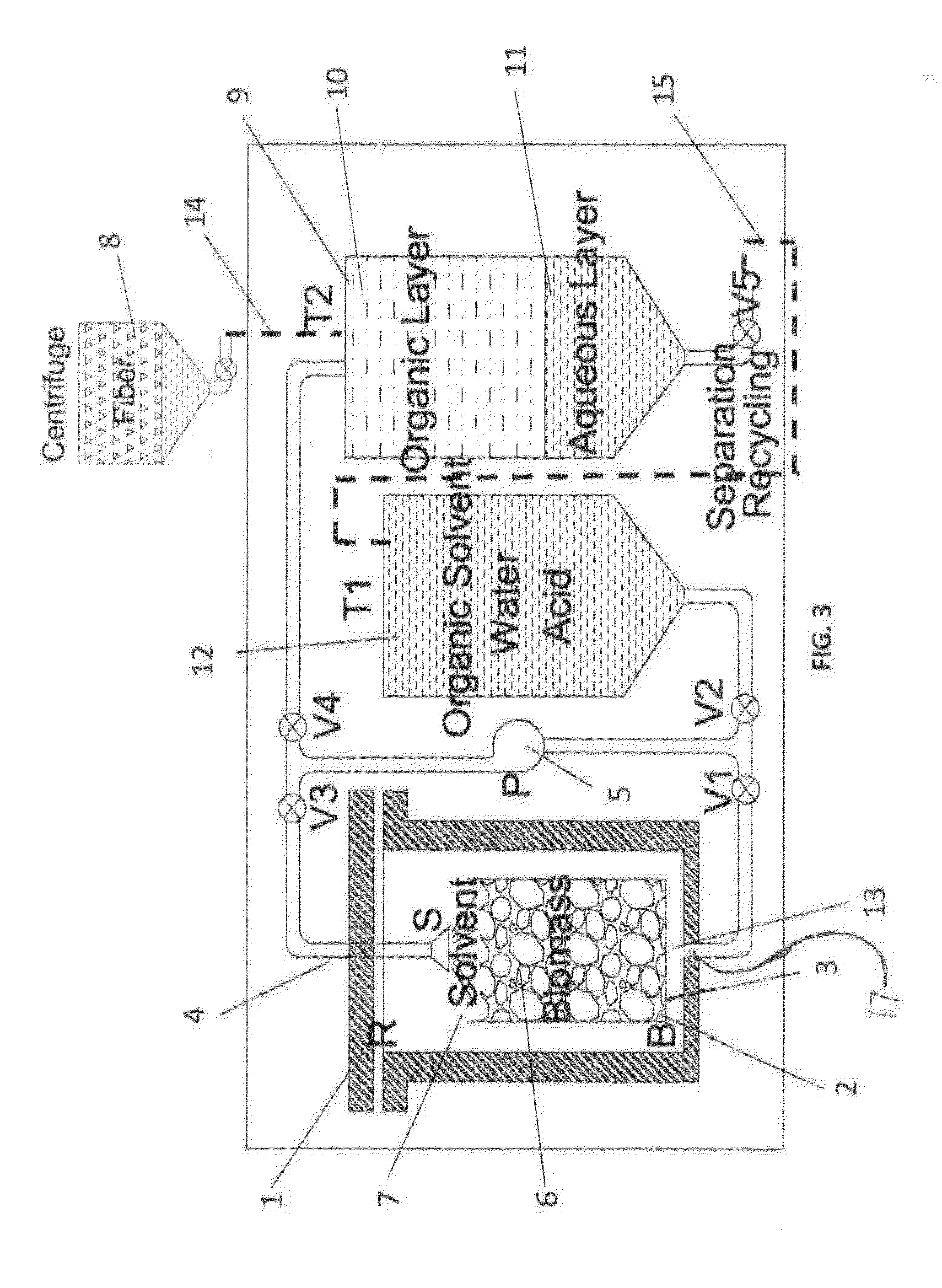System and method for extraction of chemicals from lignocellulosic materials
a technology of lignocellulosic materials and extraction methods, which is applied in the preparation of carboxylic compounds, ether preparations, and separation processes, etc., can solve the problems of affecting the economic feasibility of the process, affecting the recovery of solvents, and the cost of biomass fractionation is typically higher than the financial benefits realized
- Summary
- Abstract
- Description
- Claims
- Application Information
AI Technical Summary
Benefits of technology
Problems solved by technology
Method used
Image
Examples
example 1
[0074]An experiment was performed to test the effect of the circulation on the chemicals in the circulation solvent. The chemicals for three approximated cycles were tested after passing through the reactor and biomass. The cycles were tested without removing any particular type of chemical from the circulation solvent during the circulation and without performing any substantial treatment to the circulation solvent except for passing the solvent through the biomass.
[0075]For experiment 1, 25 g lignocellulosic biomass (mixed agricultural wastes) was used at 48% solid content or 12 grams of oven dry biomass. Generally, the target liquid (initial lignin solvent) to oven dry solid biomass by weight is five to one, where the initial lignin solvent includes sulfuric acid and equal amounts (by weight) of water and lignin dissolving chemical such as butanol. Here, the chemicals in the initial lignin solvent were 17 g water (in addition to 13 grams water from the biomass for a total of 30 g...
example 2
Effect of Temperature
[0079]Experiments were performed in a batch reactor (mechanically stirred-250 mL stainless steel autoclave) using 25 g wood chips at 48% moisture content (12 g oven dry biomass and 13 grams of water). In Example 2, the initial lignin solvent included 17 g additional water and 30 g butanol (liquid to solid by wt=5; water:butanol=1:1 by wt), as well as 0.36 g sulfuric acid, and the biomass included wood chips added to the reactor. The autoclave was then purged two times with Ar prior to being pressurized with the required gas and heated to the required temperature for the delignification process. The autoclave temperature was measured by a type-K Omega thermocouple placed inside the reactor body. The initial lignin solvent was recycled through the reactor and on the biomass to form a circulation solvent and for a set period of time recited below. After the period of time, forced air and cold water were used to facilitate cooling. Once the reactor reached room temp...
example 3
Effect of Pressure
[0092]The same solvent, biomass, and general parameters as in Example 2 were used for Example 3 except for the variation in pressure. Specifically, to evaluate the effect of pressure on the lignin extraction process, three different experiments were carried out at initial Ar pressure of 0 PSI (WB4), 100 PSI (WB1 already described above), and 200 PSI (WB6). All the experiments were carried out at 178° C. for 30 minutes. Table 3A lists the resulting lignin and pulp yield. Table 3B lists the parameters used as well as the specific chemicals produced for samples WB1, repeated from Table 2B, WB4, and WB6.
TABLE 3AEffect of PressureSamplePressureLignin %Pulp yield %WB4011.8547.82WB110011.3355.38WB620012.5631.86
TABLE 3BEffect of PressureTest Conditions, TestNumber >>>WB1WB4WB6Temperature178178178ConstantTime 30 min30 min 30 minConstantpressure (Pi)100 psi0 psi200 psiVariableSolvent, butanol:water1:11:11:1Constant(1:1 by wt)AcidH2SO4H2SO4H2SO4ConstantFeedstockwood-wood-w...
PUM
| Property | Measurement | Unit |
|---|---|---|
| temperature | aaaaa | aaaaa |
| temperature | aaaaa | aaaaa |
| temperatures | aaaaa | aaaaa |
Abstract
Description
Claims
Application Information
 Login to View More
Login to View More - R&D
- Intellectual Property
- Life Sciences
- Materials
- Tech Scout
- Unparalleled Data Quality
- Higher Quality Content
- 60% Fewer Hallucinations
Browse by: Latest US Patents, China's latest patents, Technical Efficacy Thesaurus, Application Domain, Technology Topic, Popular Technical Reports.
© 2025 PatSnap. All rights reserved.Legal|Privacy policy|Modern Slavery Act Transparency Statement|Sitemap|About US| Contact US: help@patsnap.com



